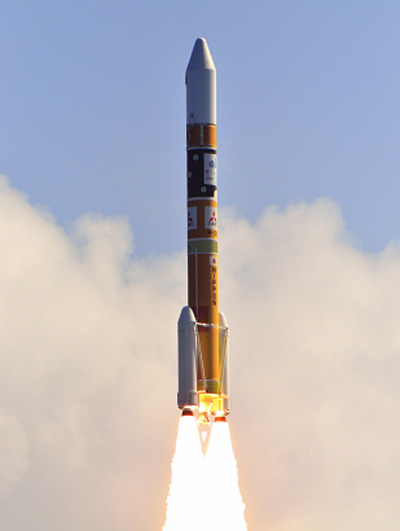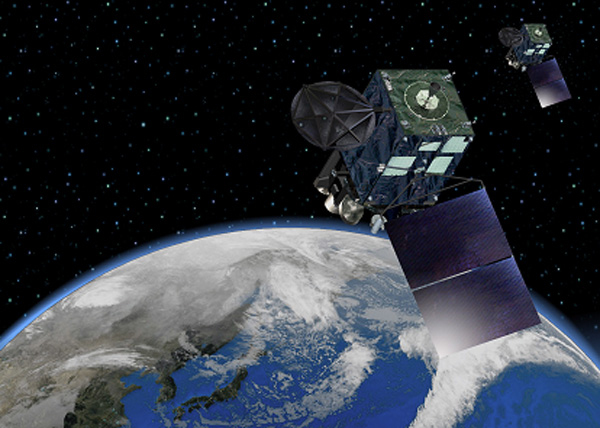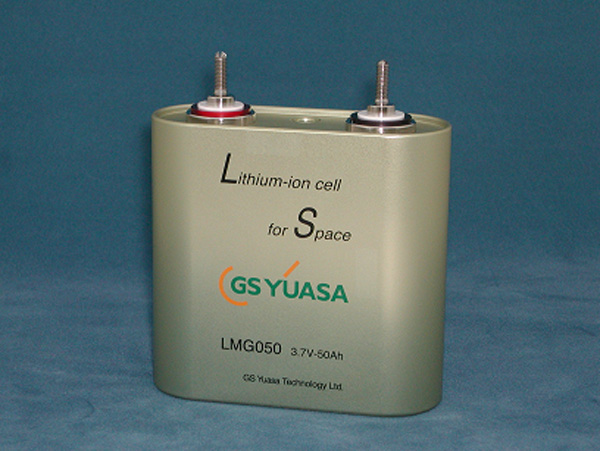GS Yuasa Corporation (Tokyo Stock Exchange: 6674; “GS Yuasa”) announced that high-performance lithium-ion batteries manufactured by group company GS Yuasa Technology Ltd. were installed in the H-IIA rocket No.25 launched by Mitsubishi Heavy Industries, Ltd. (Tokyo Stock Exchange: 7011) and the Japan Aerospace Exploration Agency (JAXA) on October 7, 2014 from the Tanegashima Space Center, as well as in the geostationary meteorological satellite “Himawari-8” which was manufactured by Mitsubishi Electric Corporation (Tokyo Stock Exchange: 6503) and carried onboard the rocket. The batteries installed in the H-IIA powered control equipment, while the batteries installed in the Himawari-8 will supply power when the satellite enters the Earth’s shadow*1.
GS Yuasa has been developing lithium-ion batteries for artificial satellites jointly with Mitsubishi Electric since 1998. The satellite batteries were first installed in the commercial communications satellite Thaicom4*2 launched in 2005, and since then, they have been widely adopted for many satellite missions. The long track record of success led to the selection of the batteries for the Himawari-8 geostationary meteorological satellite.
GS Yuasa develops and manufactures batteries and power supply systems for a wide range of special applications. The company’s high-performance, high-quality batteries are installed in sea, land, and aerospace environments, from depths of 6,500 meters below the ocean surface to 36,000 kilometers in space.
GS Yuasa will continually push the limits of battery and power supply performance to satisfy the requirements of extreme environments.
*1 While artificial satellites primarily rely on solar cells for power generation, sunlight cannot power the cells when satellites enter the Earth’s shadow. During this period, lithium-ion batteries power the satellites.
*2 Thaicom 4 (IPSTAR) is a communications satellite manufactured by Space Systems/Loral LLC of the U.S. for Shin Satellite Plc of Thailand.
| Nominal voltage (V) | 3.7 |
|---|---|
| Capacity (Ah) | 50 |
| Dimensions (WxDxH) | 130×50×131(mm) |
| Mass (g) | 1510 |
■1. H-IIA Rocket, No. 25 (Courtesy: JAXA)

■2. Himawari-8 geostationary meteorological satellite (Courtesy: Japan Meteorological Agency)

■3. LMG050 installed in the Himawari-8 satellite (certified by Mitsubishi Electric Corporation)






